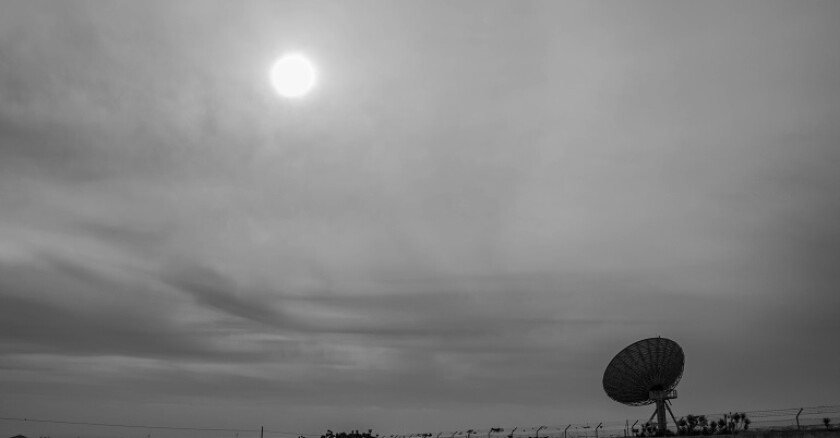While the Long Beach, California-based company already has managed 32 launches of its Electron rocket, they have all flown from New Zealand. Now, the company has set up shop at the Mid-Atlantic Regional Spaceport at NASA Wallops Flight Facility on the Eastern Shore in Virginia.
High winds stymied two chances over the weekend, though.
“We’re assessing remaining opportunities for launch this month before holiday airspace restrictions prevent further launch attempts in [December],” the company posted on its Twitter account.
If and when it manages liftoff, it will join Northrop Grumman, which has launched its Cygnus spacecraft on its Antares rockets from the site. The Virginia site is also expected to host Firefly Aerospace rockets in time.
The arrival of Rocket Lab means yet another new rocket company competing for the small satellite launch market from the U.S. These are smaller rockets than SpaceX, Northrop Grumman or United Launch Alliance.
The Electron rocket is 59 feet high and just shy of 4 feet wide with the ability to carry 661 pounds to low-Earth orbit with 50,400 pounds of thrust at liftoff through its nine Rutherford engines.
In comparison, SpaceX’s Falcon 9 is 230 feet tall and 12 feet wide with the ability to carry 50,000 pounds to low-Earth orbit with as much as 1.7 million pounds of thrust at liftoff through its nine Merlin engines.
Companies vying in this small-lift rocket category include Firefly, Relativity Space, Astra Space, Virgin Orbit, ABL Space Systems and Phantom Space, all of which are listed by NASA as potential providers for its small satellite launch contracts under the Venture-Class Acquisition of Dedicated and Rideshare (VADR) program.
Rocket launch attempts are popping up at all of the U.S. launch sites.
Relativity Space is gearing up now from Cape Canaveral Space Force Station for its first ever flight, the 3D-printed Terran 1. Firefly managed it first successful launch of its Alpha rocket on Oct. 1 from Vandenberg Space Force Base. ABL Space Systems is working on its first launch attempt of its RS1 rocket from Alaska in January.
Astra Space had two orbital successes with its Rocket 3 from Alaska, but in its two launch attempts from Canaveral in 2022, both ultimately ended in failure with second stage issues not allowing payloads to reach orbit. It’s now working on a new rocket not expected until 2024.
That failure was Rocket Lab’s gain, though, as one contract through VADR coming the company’s way will be to finish up the job Astra Space was not able to complete this past summer.
That’s to send up the remaining four of what had been six small satellites under NASA’s Time-Resolved Observations of Precipitation Structure and Storm Intensity with a Constellation of Smallsats (TROPICS) mission, which seeks to provide more reliable measurements of tropical storms and hurricanes looking at precipitation, temperature and humidity.
Last June, Astra Space attempted the first of what was supposed to be three launches for the TROPICS mission, but after the failure, NASA switched to Rocket Lab, and both of the required remaining flights to put the final four TROPICS satellites into orbit are expected no earlier than May 2023, with both launches within 60 days of one another.
“This year we once again witnessed the devastating effects of hurricanes and tropical storms on lives and livelihoods, underscoring the importance of improved climate data from space to enable scientists and researchers to accurately predict storm strength and give people time to evacuate and make plans,” said Rocket Lab founder and CEO Peter Beck in a press release after the November announcement. “The TROPICS satellites need a responsive and reliable path to orbit to equip people with near real-time, actionable weather data and Rocket Lab is honored to provide a dependable launch solution as we approach the 2023 hurricane season. We look forward to working closely with the team at NASA to deliver mission success once again.”
To date, Electron has managed to send 152 satellites to orbit for both commercial and government customers including NASA, the National Reconnaissance Office, DARPA and the U.S. Space Force. Last June it sent up the Cislunar Autonomous Positioning System Technology Operations and Navigation Experiment (CAPSTONE) that was sent to the moon to test the Near Rectilinear Halo Orbit that will be used for NASA’s Gateway lunar space station as part of the Artemis program.
For its first launch from Wallops, though, named the “Virginia Is For Launch Lovers” mission, Rocket Lab aims to send up three satellites for radio frequency geospatial analytics provider HawkEye 360. It’s the first launch to put up 15 of the satellites for the company through 2024.
“This mission is a significant moment for Rocket Lab and a pivotal milestone for Virginia’s long legacy in spaceflight,” said Beck.
© 2022 Orlando Sentinel. Distributed by Tribune Content Agency, LLC.








